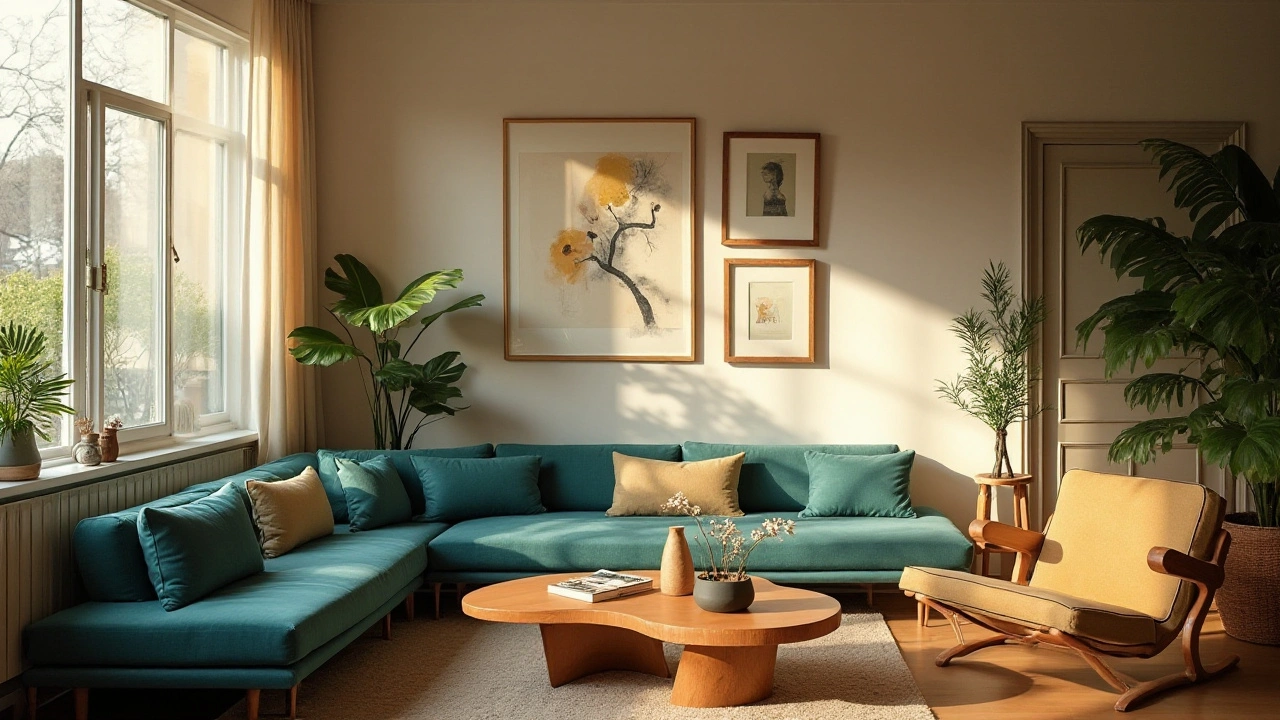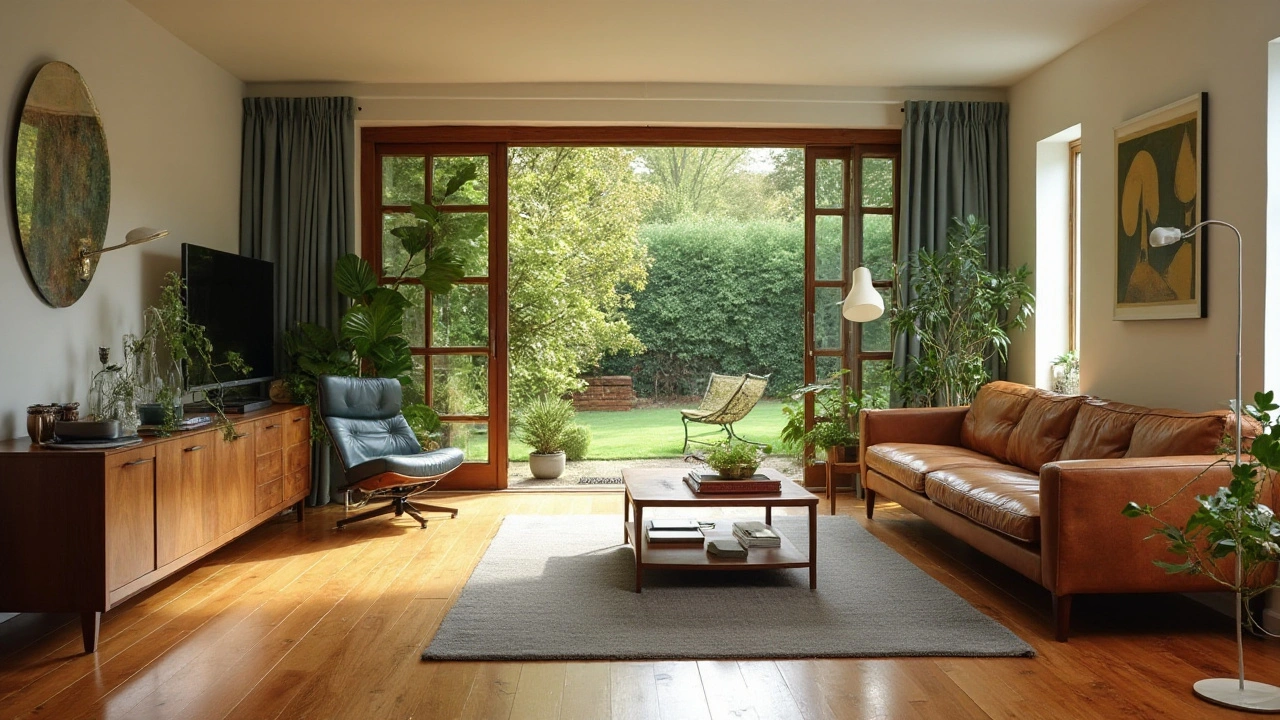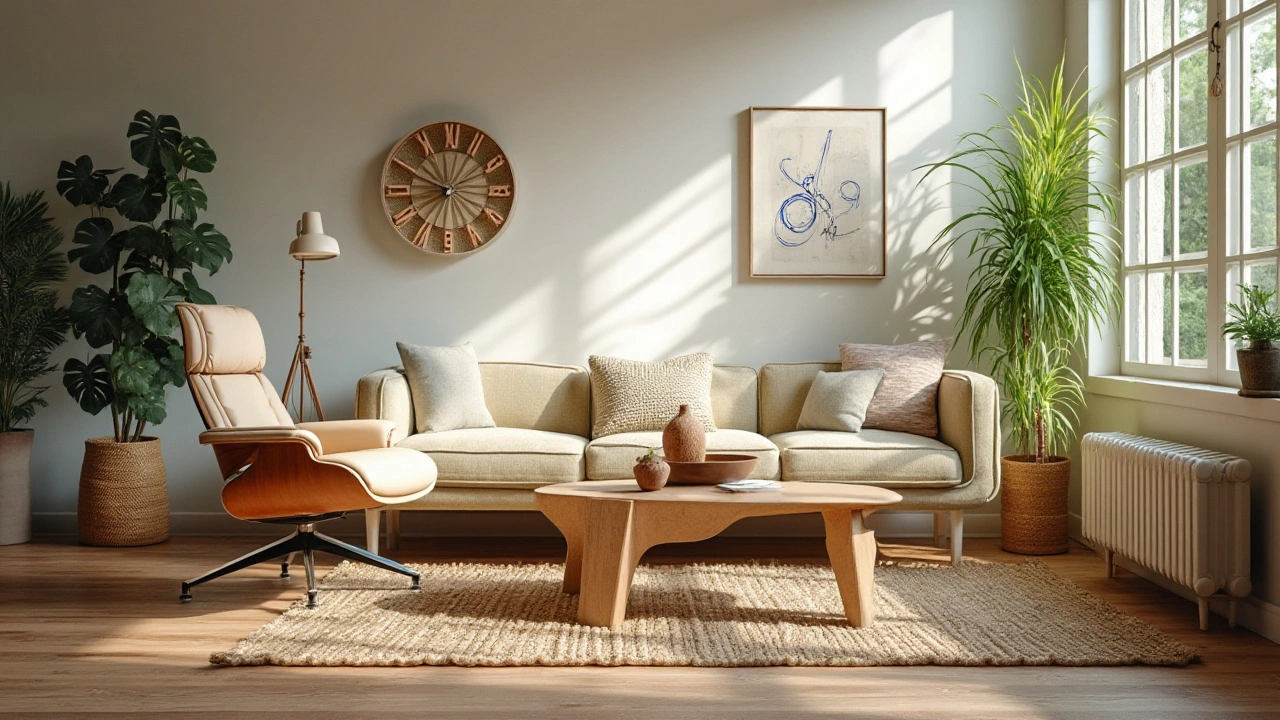Mid-Century Modern: How to Spot It and Use It at Home
Mid-century modern isn’t nostalgia for its own sake — it changed how we design houses, furniture, and even how rooms flow. Want a quick way to tell if something is mid-century modern? Look for clean lines, simple shapes, and materials that feel honest: wood, metal, glass, and molded plastic. No heavy ornament, no fuss. The style grew after World War II and aimed to make good design practical and affordable.
What makes it feel so fresh today is how it mixes function with warmth. Pieces are built to be useful: chairs that cradle your body, tables with thin legs to make rooms breathe, windows that connect the indoors to the outdoors. Colors tend to be muted with bold accents—think mustard, teal, or burnt orange against natural wood.
How to spot mid-century modern
Look for five quick signs: 1) clean, horizontal or geometric lines; 2) tapered legs on furniture; 3) organic curves in chairs and lamps; 4) open floor plans and large windows; 5) mixed materials like teak wood with metal and glass. Famous designers like Charles and Ray Eames, Eero Saarinen, and George Nelson made many iconic pieces you still see in showrooms. If a sofa sits low to the ground with thin arms and simple cushions, it’s probably mid-century inspired.
Architecture follows the same rules: flat or low-pitched roofs, wide eaves, large glass walls, and a focus on indoor-outdoor flow. If a house feels airy and horizontal rather than boxy, it might be from this era or inspired by it.
Easy ways to add mid-century modern to your home
You don’t need to remodel to get the look. Start with one standout item: a molded plastic chair, an Eames-style lounge chair, or a tulip table. Pair that with a simple wooden sideboard and a clean-lined sofa. Keep clutter low and let the furniture breathe. Add one or two bold accent colors through a rug or a lamp, not the whole room.
Want an inexpensive route? Hunt thrift stores for teak dressers or vintage lighting; sanding and a new finish can revive older pieces. Mix a vintage piece with current minimalist items to avoid a theme-park effect. For rentals, try swap-friendly changes: peel-and-stick wallpaper on a single wall, a mid-century rug, or new cabinet handles.
Maintenance is easy: wipe wood with a damp cloth, tighten tapered legs, and replace old foam cushions if they sag. If you own a mid-century house, keep original windows and open sightlines—those are key to the style.
Mid-century modern works because it balances comfort with clarity. Whether you love true vintage or a modern take, aim for simple forms, honest materials, and one or two bold touches. You’ll get a space that looks calm, lived-in, and timeless without feeling stuck in the past.

Exploring the Essence and Influence of Mid-Century Modern Design
The Mid-Century Modern movement, which emerged in the mid-20th century, revolutionized architecture, interior design, and furniture aesthetics. Known for its organic shapes, minimalistic forms, and emphasis on functionality, it reflects an era of innovation and creativity. The movement not only shaped residential spaces but also influenced public buildings and city planning. Its timeless appeal continues to captivate modern designers and homeowners alike, making it a resilient style that blends form and function seamlessly. Delve into its origins, key elements, and lasting impact on contemporary spaces.
Read more
Timeless Allure of Mid-Century Modern Interiors
Mid-century modern design stands the test of time with its balance of function and style. Emerging during the mid-20th century, this design movement is characterized by simple forms, organic influences, and integration with nature. It places a strong emphasis on functionality, using wood, metal, and glass to create sleek lines and uncluttered spaces. Mid-century modern continues to charm homeowners and designers alike, providing practical yet stylish solutions for contemporary living spaces.
Read more
Mid-Century Modern's Impact on Sustainable Home Design
The appeal of mid-century modern design goes beyond its sleek lines and iconic furniture; it holds a significant role in today's sustainable design movement. By emphasizing function, simplicity, and the use of natural materials, mid-century modern principles align seamlessly with eco-friendly practices. This style encourages both durability and an appreciation for craftsmanship, making it a perfect fit for sustainable living. This article explores how mid-century modern approaches can be applied to create greener, more sustainable homes today.
Read more
Why Investing in Mid-Century Modern Furniture Is a Wise Choice for Your Home
Exploring the realm of mid-century modern furniture as an investment brings to light the timeless appeal and financial benefits this style offers. This article delves into the history and resurgence of mid-century modern aesthetics, emphasizes the importance of authenticity in investments, and offers practical tips for identifying and maintaining valuable pieces. Furthermore, it highlights the role of sustainability and the emotional connections that enhance the worth of these items, ultimately making a case for mid-century modern furniture as a smart financial and aesthetic choice for contemporary homes.
Read more